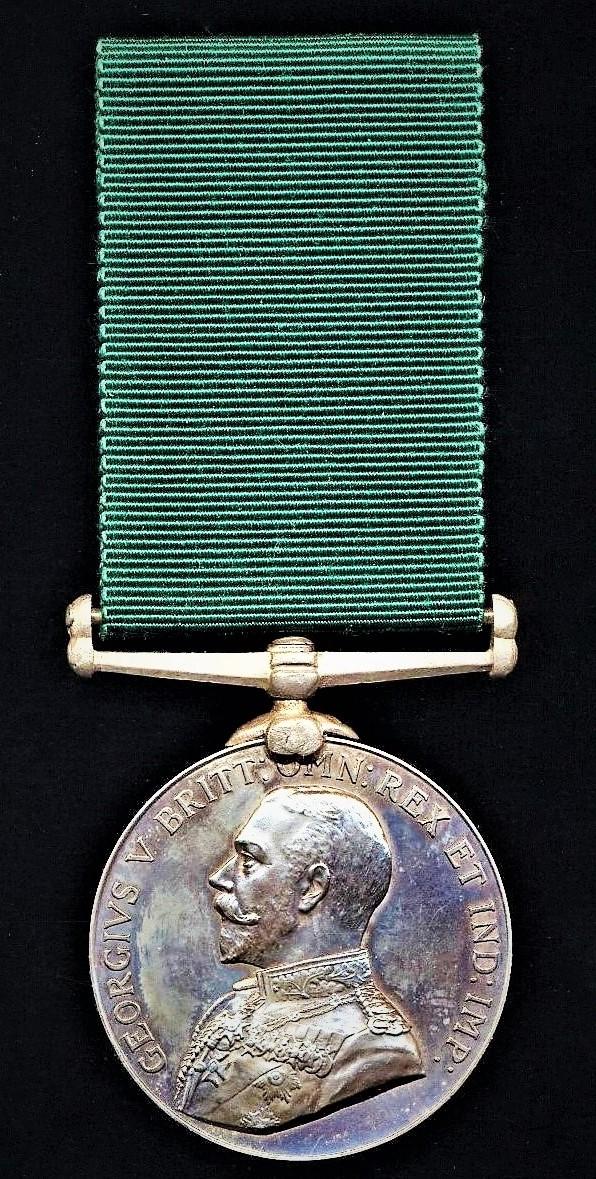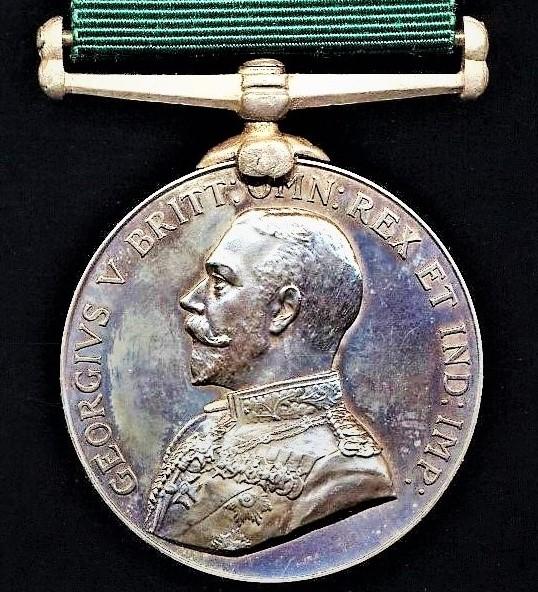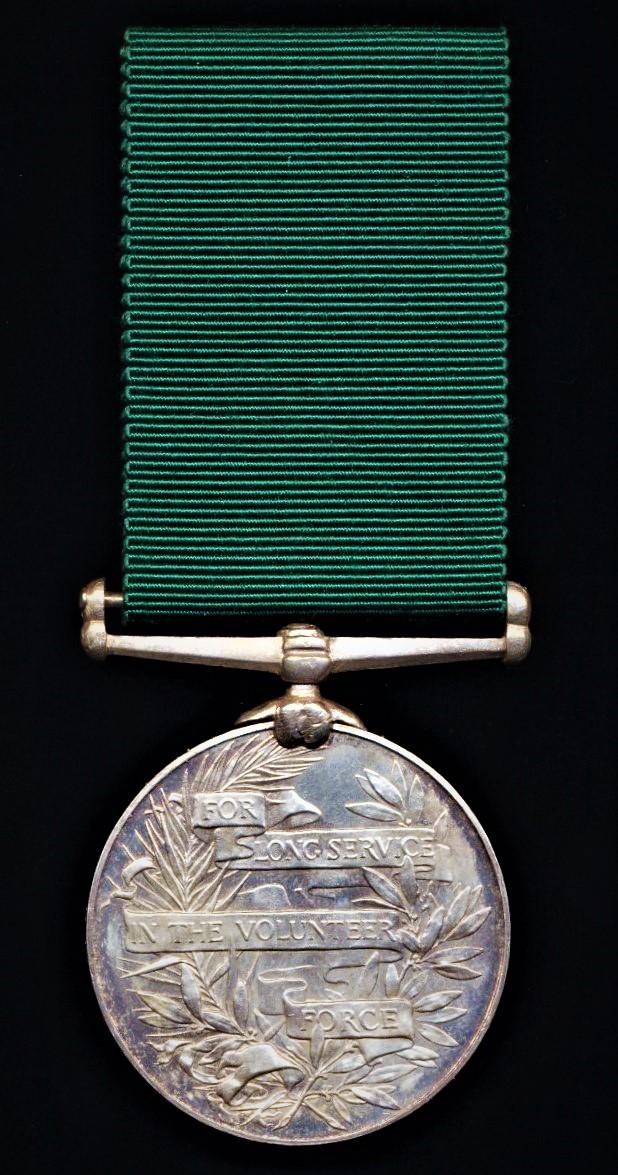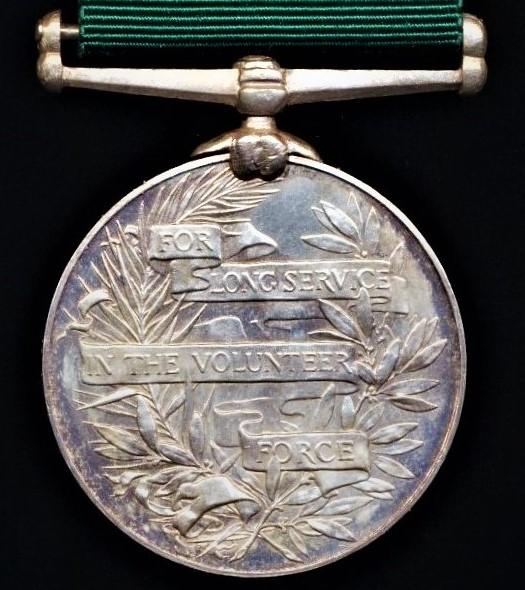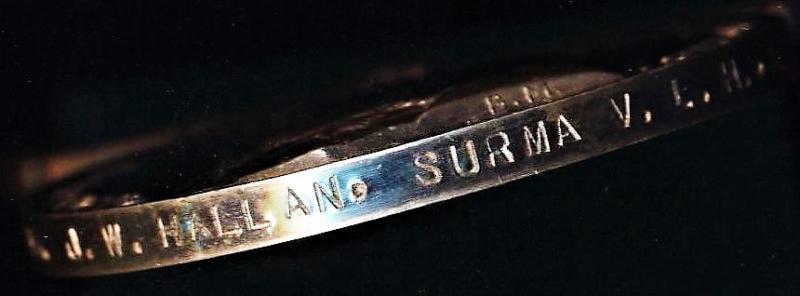Volunteer Long Service (India & the Colonies). GV issue (Tpr., J. W. Hallan. Surma V. L. H. (A.F.I.))
The volunteer recipient, James Wilson Hallan, a Scottish 'Tea Planter', was holding the rank of Trooper while serving with the Surma Valley Light Horse, a cavalry regiment of the Auxiliary Force India
Medal verification: The medal confirmed awarded per Indian Army Order 129 of 1932
In addition to the VLSM, Troper Hallan, had been decorated with the award of a Mention-in-Despatches for valuable in East Africa during the Great War, in which he served as a Lieutenant with the Royal Highlanders (Black Watch) attached to 2/4th (Uganda) Battalion King's African Rifles - these latter awards confirmed as never being issued / received by the recipient!
Although entitled to the award of a Great War campaign pair, those medals were never issued to him, with both the respective medal rolls showing 'returned' and the Medal Index Card stating that the medals were returned to the War Office by the office of the Under Secretary of State for the Colonies, with no record of the medals ever being subsequently re-issued. The awards Lieutenant Hallan was entitled to for his Great War service were:
- Mention-in-Despatches: London Gazette 3 June 1919, award dated 5 June 1919
- British War & Interallied Victory Medals: WO 329/2341 Kings African Rifles medal roll (att'd fm Royal Highlanders / with remarks medals 'returned')
Reference 'The Auxiliary Force India and its Predecessors...' (Harfield, 2015) an estimated 87 x GV issue Volunteer Long Service Medals awarded to the unit under its designation Surma Valley Light Horse (A.F.I.)
Surma Valley Light Horse: The unit - the third most senior cavalry regiment of the Auxiliary Force India - had its origins in 1880, when it was raised and originally styled as the Sylhet Volunteer Rifle Corps in 1880, subsequently morphing into the Cachar and Sylhet Mounted Rifles in 1883. The unit together with the Assam Valley Light Horse, formed the 2 x mounted volunteer cavalry regiments in Assam province. The ranks of the SVLH were comprised mainly from amongst the tea planters from the Silchar area in Assam, North East India. In 1886 the unit was re-named the Surma Valley Light Horse. In 1917, it was briefly re-styled as 2nd Surma Valley Light Horse when it was a constituent member of the Indian Defence Force. In 1922, the regiment's name reverted to 'Surma Valley Light Horse', in which year it joined the Auxiliary Force India. The Surma Valley Horse was disbanded along with all other Indian Auxiliary Force units on, 14 August 1947, the eve of Indian independence
Deployment in wake of the Chittagong Armouries Raid: 20-28 April 1930, a party of 'All-Ranks', comprising 3 x Officers and 17 x Other-Ranks of the Surma Valley Light Horse was mobilised in support of the Civil Authority, and assembled at Silchar, where they entrained under the Adjutant for deployment by rail to the Port City of Chittagong. On arrival in Chittagong, they found the Armouries burned to the ground, the city under a state of emergency, rioting and the European women and children evacuated to merchant vessels anchored midstream. The SVLH were billeted in the Circuit House, from where they patrolled the city for 3 days, night and day, with each volunteer working on a rota of 2 hours on duty and one hour resting. After the insurgents were located in the Chittagong hills, the SVLH men joined the field force, and came under rifle fire and in the ensuing action, with at least one Trooper 'Wounded-in-Action', shot in the wrist. Around twenty 'raiders' were discovered the following day, but most of the armed insurgents evaded capture, escaping deeper into the Chittagong Hill Tracts. After their return to Silchar, the regiment received a letter of appreciation from General Sir John O'Shea, the Chief of Staff of Headquarters Eastern Command, India
James Wilson Hallan, son of Robert Hallan (Hotel Keeper, Star Hotel, Ayr d.1896) & Jessie Hallan (nee Thomson, described as a widowed 'Publican' in 1901 Census for Scotland) was a native of, Kilmaurs, Ayrshire, Scotland, where he was born on, 15 February 1886. Prior to the Great War, James had accepted an appointment with James Finlay and Co Ltd, West Nile Street, Glasgow, to work overseas in British India, where he was employed as a 'Tea Planter', located in the Surma Valley region of what was then undivided Assam. Thackers Indian Directory of 1915, shows him listed described as 'Sub Manager, Rajghat Division, Consolidated Tea & Lands Co Ltd (a James Finlay company), Post Office Kalighat, Sylhet (now located in Bangladesh). With the exception of his services in the British Army 1916-1919, during which he held a commission in the Royal Highlanders (Black Watch) and served as a (Temporary) Lieutenant attached to the 2nd / 4th (Uganda) Battalion King's African Rifles in East Africa, James appears to have remained a Tea-Planter at various plantations in the Surma Valley region of Assam, through to circa 1932. Post 1932 editions of 'Thackers' show him holding the appointment of General Manager, employed with the United Provinces Sugar Co Ltd, located variously at, 1 Clive Street, Calcutta (1934), then with the same company, shown as 'Bubnowlie' concern, Post Office Tamkohi, Gorakhpur, United Provinces (1935) and located at, Scorahi, Gorakhpur, United Provinces (1939). James Hallan married Dorothy Christine Anderson at Morningside, Edinburgh, Scotland, in 1929, and is recorded to have died in Edinburgh, Scotland, on, 6 December 1971
Condition: Toned about EF
Code: 23180



